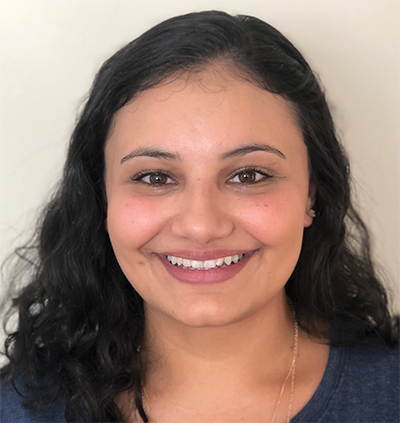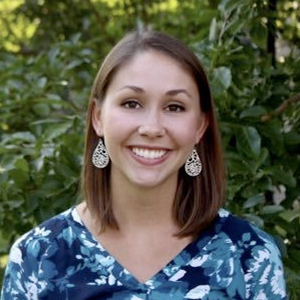Using crystallography to answer questions of structure and function
Caroline Soliman discovered her love for lab work as an undergraduate studying biomedical science at Monash University in Melbourne, Australia. She thrived on doing hands-on work to answer the question “What’s my goal, and how am I going to get there?”
 The findings of Caroline Soliman’s team are crucial for understanding the function of carbohydrate-binding human antibodies as potential microbial therapeutics.
The findings of Caroline Soliman’s team are crucial for understanding the function of carbohydrate-binding human antibodies as potential microbial therapeutics.
Now a graduate student at the Royal Melbourne Institute of Technology, or RMIT, Soliman won a 2019 Journal of Biological Chemistry/Herbert Tabor Young Investigator Award for her work on the structural characterization of antibody candidates that recognize carbohydrates for immunotherapy for infection.
Soliman earned an honors degree at Monash University through the Burnet Institute. For her thesis, she worked with Paul Ramsland, now her dissertation mentor, to develop a peptide-based inhibitor to mimic the binding of a microbial protein to immunoglobulin A. The project sparked an interest in crystallography.
“I gained an appreciation for the importance of structure in terms of function,” she said.
After a short break from research, Soliman returned to Ramsland’s lab for her doctoral training at RMIT. Together, they crafted a project with translational benefits and an international collaboration with Gerald Pier of Harvard Medical School that would give Soliman the chance to develop her crystallography skills.
“My supervisor has been very supportive and encouraging,” she said, adding that Ramsland helped her navigate the roadblocks of learning crystallography, teaching her how to collect data from the Australian Synchrotron and walking her through the process of solving a crystal structure.
When not solving crystal structures, Soliman can be found in the kitchen baking cakes, tarts and other sweet treats. She also enjoys reading, swimming at the beach and spending time with her family in Melbourne.
After completing her Ph.D., Soliman hopes to pursue a career in research and to teach immunology.
“It’s really important to do something you enjoy,” she said.
Fighting antibiotic resistance with antibodies
Antibiotics are used to fight bacterial infections, but antibiotic resistance has created a need for alternative therapies. Many of the antibiotic-resistant bacteria prioritized for therapeutic development are known to form biofilms, sticky aggregations of microbes that act as an additional barrier against antibacterial therapies.
Therapeutic antibodies are a strong candidate to overcome both antibiotic resistance and barriers such as bacterial biofilms. Humans typically develop protective antibodies to bacterial carbohydrates as a result of infection, so researchers have focused on carbohydrate-binding antibodies. Specifically, the human antibody F598 is being tested in the clinical setting because it can elicit protective activities after binding to the microbial carbohydrate poly-N-acetyl-D-glucosamine, or PNAG, which is a polymer of N-acetyl-D-glucosamine, or GlcNAc, units.
To understand how this antibody targets PNAG, Caroline Soliman and colleagues defined the structural basis for recognition of PNAG by F598. They determined crystal structures for the antibody-binding fragment, or Fab, of F598 and its complexes with two carbohydrates, GlcNAc and a PNAG oligosaccharide. They found that the Fab binds to extracellular polysaccharide in biofilms and to PNAG on the surface of Staphylococcus aureus.
This was the first study to report the structural basis for human antibody recognition of PNAG.
Enjoy reading ASBMB Today?
Become a member to receive the print edition four times a year and the digital edition monthly.
Learn moreGet the latest from ASBMB Today
Enter your email address, and we’ll send you a weekly email with recent articles, interviews and more.
Latest in People
People highlights or most popular articles

Finding a symphony among complex molecules
MOSAIC scholar Stanna Dorn uses total synthesis to recreate rare bacterial natural products with potential therapeutic applications.

Sketching, scribbling and scicomm
Graduate student Ari Paiz describes how her love of science and art blend to make her an effective science communicator.

Embrace your neurodivergence and flourish in college
This guide offers practical advice on setting yourself up for success — learn how to leverage campus resources, work with professors and embrace your strengths.

Survival tools for a neurodivergent brain in academia
Working in academia is hard, and being neurodivergent makes it harder. Here are a few tools that may help, from a Ph.D. student with ADHD.

Quieting the static: Building inclusive STEM classrooms
Christin Monroe, an assistant professor of chemistry at Landmark College, offers practical tips to help educators make their classrooms more accessible to neurodivergent scientists.

Hidden strengths of an autistic scientist
Navigating the world of scientific research as an autistic scientist comes with unique challenges —microaggressions, communication hurdles and the constant pressure to conform to social norms, postbaccalaureate student Taylor Stolberg writes.

